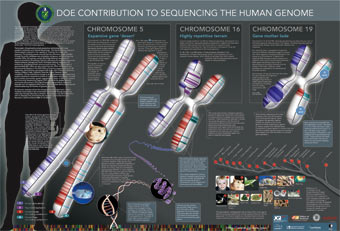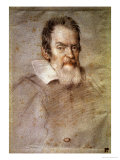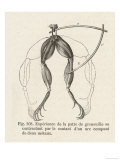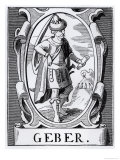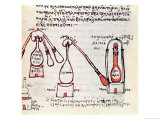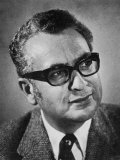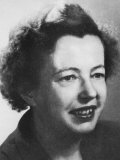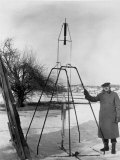|
|
|
|
|
|
|
|
|
|
|
|
SCIENCE:
PHYSICS & CHEMISTRY
|
|
|
|
|
|
|
|
|
|
|
|
|
|
|
|
|
|
|
 |
|
|
|
|
|
|
Galileo Galilei
b. 2-15-1564; Pisa, Italy
d. 1-8-1642; Italy
Galileo is often referred to as the “father” of modern astronomy, modern physics, and science, with his break from Aristotle's abstract approach to phenomenon.
|
|
|
|
Luigi Galvani
b. 9-9-1737; Bologna, Italy
d. 12-4-1798; Bologna
In 1771 physician Luigi Galvani discovered that the muscles of dead frog legs twitched when struck by a spark. Galvani's peer (and sometimes adversary) Alessandro Volta suggested the term galvanism to identify the phenomenon that is known tody as electrophysiology.
|
|
|
|
Geber
b. c. 721; southern Iran
d. c. 815; Kufa
Geber, the Latinized name of Abu Musa Jabir ibn Hayyan, was a philosopher, astronomer, and alchemist noted for his experimental work which lead to modern chemistry. Geber is attributed with the invention of ameblics which are distillation apparatus for the separation of mixtures based on differences in their volatilities when boiled.
A Muslim, Ibn Hayyan was also a Sufi, believing that it is possible to draw closer to God and to more fully embrace the Divine Presence in this life.
Geber quotes ~
• “The first essential in chemistry is that you should perform practical work and conduct experiments, for he who performs not practical work nor makes experiments will never attain the least degree of mastery.”
• The Alchemical Works of Geber
|
|
|
|
Murray Gell-Mann
b. 9-15-1929; New York City, NY
Gell-Mann is a physicist and professor whose work involved elementary particles, quantum number, quark model, and the study of complexity. In 1984 Gell-Mann co-founded the Santa Fe Institute to study complex systems and disseminate the notion of a separate interdisciplinary study of complexity theory.
Murray Gell-Mann was awarded the 1969 Nobel Prize in Physics “for his contributions and discoveries concerning the classification of elementary particles and their interactions”.
Murray Gell-Mann quotes ~
• “For me, the study of these laws is inseparable from a love of Nature in all its manifestations.”
• “We are driven by the usual insatiable curiosity of the scientist, and our work is a delightful game.”
• “Sometimes the probabilities are very close to certainties, but they're never really certainties.”
• “Today the network of relationships linking the human race to itself and to the rest of the biosphere is so complex that all aspects affect all others to an extraordinary degree. Someone should be studying the whole system, however crudely that has to be done, because no gluing together of partial studies of a complex nonlinear system can give a good idea of the behavior of the whole.”
• “Of course the word chaos is used in rather a vague sense by a lot of writers, but in physics it means a particular phenomenon, namely that in a nonlinear system the outcome is often indefinitely, arbitrarily sensitive to tiny changes in the initial condition.”
• “What is especially striking and remarkable is that in fundamental physics a beautiful or elegant theory is more likely to be right than a theory that is inelegant.”
• "In 1963, when I assigned the name “quark” to the fundamental constituents of the nucleon, I had the sound first, without the spelling, which could have been “kwork.” Then, in one of my occasional perusals of Finnegans Wake, by James Joyce, I came across the word “quark” in the phrase “Three quarks for Muster Mark.” Since “quark” (meaning, for one thing, the cry of a gull) was clearly intended to rhyme with “Mark,” as well as “bark” and other such words, I had to find an excuse to pronounce it as “kwork.” But the book represents the dreams of a publican named Humphrey Chimpden Earwicker. Words in the text are typically drawn from several sources at once, like the “portmanteau words” in Through the Looking Glass. From time to time, phrases occur in the book that are partially determined by calls for drinks at the bar. I argued, therefore, that perhaps one of the multiple sources of the cry “Three quarks for Muster Mark” might be “Three quarts for Mister Mark,” in which case the pronunciation “kwork” would not be totally unjustified. In any case, the number three fitted perfectly the way quarks occur in nature.”— (The Quark and the Jaguar: Adventures in the Simple and the Complex)
• The Eightfold Way
|
|
|
|
Maria Goeppert-Mayer
b. 6-28-1906; Kattowitz, German Empire
d. 2-20-1972; San Diego, CA
Maria Goeppert-Mayer, a German born American physicist, was awared the Nobel Prize in Physics with J. Hans D. Jensen in 1963 “for their discoveries concerning nuclear shell structure”. She is only the second woman to win the Nobel physics prize, the other was Marie Curie.
• Maria Goeppert Mayer: Physicist
|
|
|
|
|
|
|
|
|
|
previous page | top | next
Famous Chemist & Physicists List | a | b | c | d-e | f | G | h | i-j-k | l | m | n-o | p | q-r | s | t | u-z
|
|
I have searched the web for visual, text, and manipulative curriculum support materials - teaching posters, art prints, maps, charts, calendars, books and educational toys featuring famous people, places and events - to help teachers optimize their valuable time and budget.
Browsing the subject areas at NetPosterWorks.com is a learning experience where educators can plan context rich environments while comparing prices, special discounts, framing options and shipping from educational resources.
Thank you for starting your search for inspirational, motivational, and educational posters and learning materials at NetPosterWorks.com. If you need help please contact us.
|
|
|


